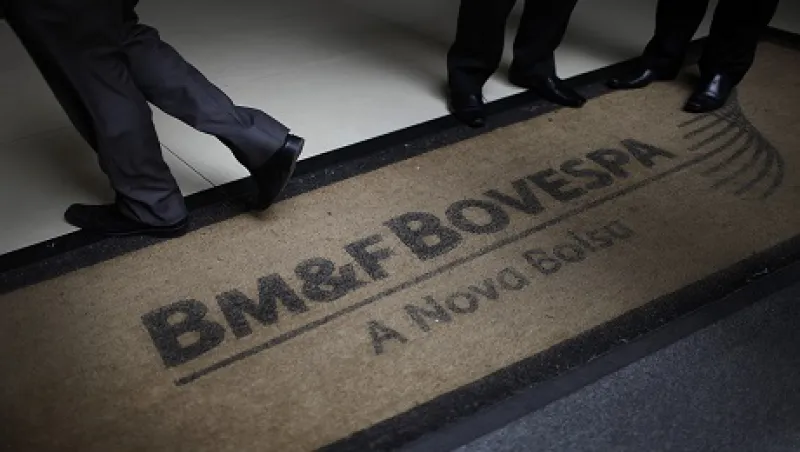Brazil, according to an old joke, is the country of the future — and always will be. Could the same point be made about the prospect of competition in the country’s equity market?
When Jersey City, New Jersey–based stock exchange operator Direct Edge announced in November 2011 that it was planning to build an equities exchange in Rio de Janeiro, it prompted the fanfare that usually accompanies such news. “Direct Edge Brazil will serve as the inspiration to re-create a new and modern financial center in the city,” said Marcelo Haddad, executive director of Rio Negócios, the local investment promotion agency.
Eighteen months later Direct Edge, the fourth-largest stock exchange in the U.S., with about 12 percent of the listed equity trading volume, finds its ambitious Brazilian project mired in the market structure equivalent of trench warfare. It needs to convince the national securities regulator, the Comissão de Valores Mobiliários, that competition will be good for the Brazilian marketplace. And Direct Edge needs to reassure BM&FBovespa, Brazil’s sole exchange operator, that competition will be good for it too, despite ending the monopoly the incumbent enjoys.
According to William O’Brien, CEO of Direct Edge, the firm has met these challenges and will file its application for registration as a local exchange operator “within the next couple of months.”
Direct Edge is holding off on making infrastructure and technology investments in Brazil until it gets approval from the CVM, which will have 180 days from the application’s filing to decide. But O’Brien says the firm remains “incredibly committed to the project and optimistic on its outcome.” If Direct Edge wins approval, the new exchange should be able to start operations in the first half of 2014.
That’s a big if, though. BM&FBovespa has a lock on all trading, clearing and settlement services for locally traded Brazilian securities. Building a clearinghouse is an immensely expensive and time-consuming task. Several exchanges are gearing up to enter the Brazilian market, and most will probably view membership in Bovespa’s clearinghouse as the easiest and cheapest way to provide posttrade services to their customers.
In 2007 the CVM laid out a regulatory framework to prepare for the arrival of competitors in the Brazilian exchange environment. A 2012 report on this subject that it commissioned from U.K.-based economics consulting firm Oxera cautiously endorsed competition. But the regulator’s position is somewhat opaque. “While recognizing the potential benefits of competition, the CVM believes a market regulator should be neutral with regard to the prospect of the establishment of new market structures in Brazil,” says Leonardo Pereira, its new president.
BM&FBovespa was initially hostile to opening up its clearing services to rival exchanges, but it now seems to have softened that stance. The exchange is midway through consolidating its derivatives and equities clearinghouses, which are now separate, and says any discussion of third-party access to clearing must wait until that project finishes in 2015. For firms like Direct Edge that are looking to break into the Brazilian market, this timetable is unappealing.
Direct Edge, which plans to focus exclusively on cash equity trading in Brazil, says it has pitched BM&FBovespa on the benefits that could flow from increased competition: higher overall trading volumes, with the boost to cash equity trading through Direct Edge’s also providing a fillip to BM&FBovespa’s equity derivatives business, and increased revenue from clearing. “We think we can be part of a pie expanding for the benefit of all constituents in Brazilian capital markets,” CEO O’Brien says.
BM&FBovespa contends that the fragmentation of liquidity carries the risk of importing elements of the market dysfunction that have bedeviled trading venues in the U.S. and Europe: distortions in price discovery, order manipulation and all that high-frequency-trading-inflected woe. Besides, says BM&FBovespa CFO Eduardo Refinetti Guardia, “a fragmented market is also more complex to regulate and monitor, and this balance between market integrity and an artificial bigger market must be carefully analyzed and addressed by the regulators.”
Brazil remains fertile ground for the development of deeper capital markets. “You have 200 million people; 25 million have checking accounts, and 600,000 have brokerage accounts,” says Anthony Barchetto, Direct Edge’s head of strategy. “It’s underpenetrated in equities. We think that’s a long-term story.”
The incentives are compelling, but so is the resistance. The next few months will show Direct Edge whether the effort was worth it. O’Brien sees the experience of his exchange, which was launched in 1998, in unsettling dominant incumbents at home as reason for optimism. “We had success in the U.S. in the face of competition that’s been around for hundreds of years and already knows all the customers,” he says. “There are some parallels with Brazil.” • •







